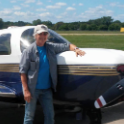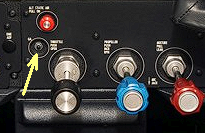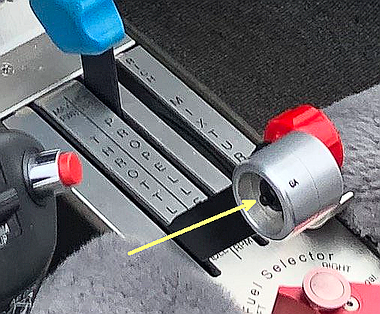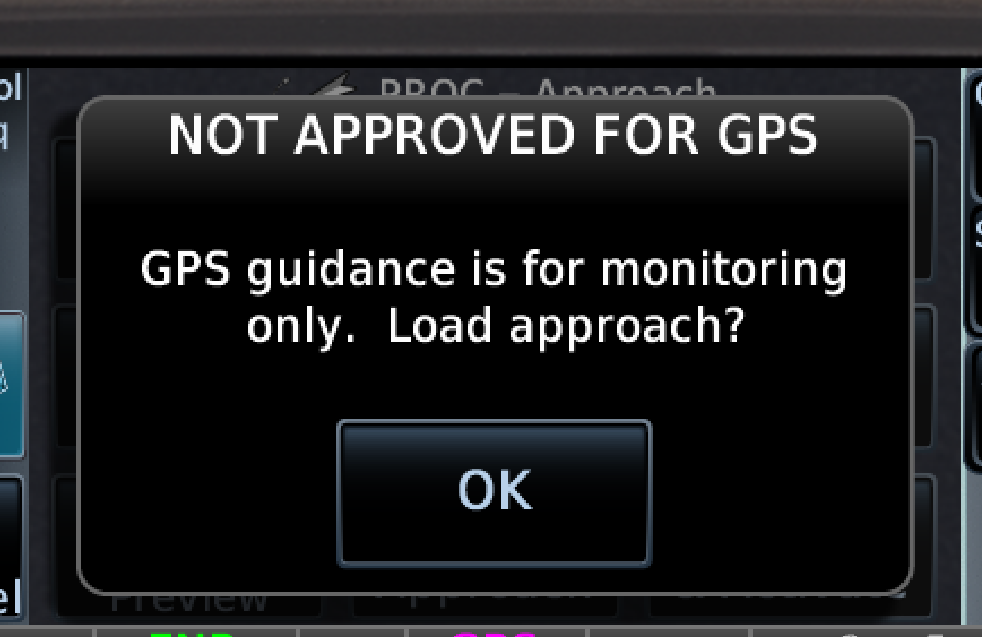-
Posts
4,159 -
Joined
-
Last visited
-
Days Won
15
Content Type
Profiles
Forums
Blogs
Gallery
Downloads
Events
Store
Everything posted by midlifeflyer
-

Garmin GFC 500 Autopilot Flight Overview
midlifeflyer replied to Rmag's topic in Avionics/Panel Discussion
For extended stabilized climbs, IAS mode has many benefits for safety and efficiency. But we're talking here about the first 800-1000' of a takeoff using a pitch /roll mode that is designed with enough of a safety buffer to handle the first stages of a go-around or a missed approach when you see nothing when 200' above the runway, both of which (from what I've read) historically carry more risk than initial takeoff and climb. I'm not worried about flying wings-level pitch for that. When we start talking about this, we're talking about technique. Mine, long before flight directors was to fly pitch for those three high workload events rather than chase airspeed indicators. Translating that to a FD, for me that TOGA. I guess one could if they chose, set the FD for target IAS before takeoff and twist the IAS know during the earliest stage of a go-around or missed approach, but that wouldn't be my choice.. -

Garmin GFC 500 Autopilot Flight Overview
midlifeflyer replied to Rmag's topic in Avionics/Panel Discussion
Dunno. I see two posts by you in this thread and neither talks about why your think it might not be legal. -

Garmin GFC 500 Autopilot Flight Overview
midlifeflyer replied to Rmag's topic in Avionics/Panel Discussion
Yes, people do. And many think it's an excellent technique. That's a matter of personal preference. But why do you think it might not be legal to have command bars displaying a 7 degree departure pitch attitude on an attitude indicator? -

Garmin GFC 500 Autopilot Flight Overview
midlifeflyer replied to Rmag's topic in Avionics/Panel Discussion
@William Munney and I use the same sequence. After startup Flight plan entered Altitude and initial heading bugged Before takeoff TOGA pressed. After takeoff - ≥ 800 AGL AP engaged HDG mode Climb mode There is at least one modification. On an IFR departure with an initial turn below 800', the switch to HDG mode will come earlier and before AP engagement. To answer your other question, press the button as you advance throttle is kind of what you want to do in the go-around/missed approach situation where the initial climb is (almost) invariably straight ahead. But it may have its rom the G1000./GFC700 combo. If the aircraft uses a lever throttle, the TOGA button is often integrated into the throttle (DA40 pic). With a vernier throttle you can just stick out your thumb as you throttle up (C182 pic). Ideally an aftermarket install of a GFC 500 or 600 will place it in that kind of position, but I know that's not always the case. I just do it as one of the last pretakeoff items at the hold short line. With the variety if aircraft I fly, it just makes more sense for me. -

Garmin GFC 500 Autopilot Flight Overview
midlifeflyer replied to Rmag's topic in Avionics/Panel Discussion
All it’s doing is giving you a FD picture for a normal climb. So why do you think it couldn’t. While it’s not necessary and some don’t teach it for takeoff, others do because consistency builds a habit that makes it less likely you will forget it when you need it. This is especially true with new equipment but it applies to many flight operations. My flying club has an airplane with TOGA. When I do checkouts or recurrent training, I see lots of pilots who don’t use it for takeoff. Most of them don’t use it for a go-around or missed approach either. Debrief: Me: any reason you didn’t use the TOGA in that go-around/missed approach? They: I forgot. -

Garmin GFC 500 Autopilot Flight Overview
midlifeflyer replied to Rmag's topic in Avionics/Panel Discussion
Is this opinion or is there a verifiable reference for “should”? (I don’t disagree. It’s what I do and teach. ) -

Garmin GFC 500 Autopilot Flight Overview
midlifeflyer replied to Rmag's topic in Avionics/Panel Discussion
Yes, that's what I've been seeing in various makes and models. More like a cruise climb than a Vx or Vy climb. -

Garmin GFC 500 Autopilot Flight Overview
midlifeflyer replied to Rmag's topic in Avionics/Panel Discussion
Yes, I know it's 7 degrees. That seems to be fairly standard across many light GA aircraft makes and models. I don't know what it ends up doing in a Bravo, but I've been using 7 to 10 degrees for a basic departure climb is almost all of the 30+ makes and models I've flown over the past 3 decades. Mostly curious at this point. -

Garmin GFC 500 Autopilot Flight Overview
midlifeflyer replied to Rmag's topic in Avionics/Panel Discussion
It does? Do you have a reference for that? (If I have it, I use it for all takeoffs - one less thing to forget when its needed). If so, I'm trying to make sense why. Primary use is a missed approach and I can't see a need for Vx. In terms of "differently, TOGA is my initial climb. My heading bug and altitude are pre-set. If it's a straight ahead initial climb beyond the altitude limitation, I engage the AP in TOGA mode. HDG (or NAV as appropriate) mode (whether Flight Director or full AP) comes at the point when I am going to turn. The basic TOGA climb is comfortable enough that switching to IAS/FLC is the last step. I agree completely with a mini-checklist at least at the beginning. I don't, but that's only because my engagement sequence is pretty much the same regardless of equipment - I even engage old autopilots in their default mode before switching to HDG/NAV and climb. -
That is not unusual. A series of training sessions culminating with a FR and/or IPC.
-
There is a difference many have pointed to. A flight review is, by regulatory definition, training. The IPC doesn't use "training" anywhere. Many have therefore taken the view that an IPC is a check of competence, not training to competence. IOW, a checkride.
-
Once can certainly use an IPC for proficiency training, but there are some stumbling blocks. One is what @Vance Harral mentioned - overload. Aside from that, Depending on where, IPCs tend to be local for efficiency. That mean a few things. The pilot is familiar with the approaches; probably has flown them many times. In many areas, it means not utilizing ATC services, let along doing an IFR cross country to a less familiar area. (OTOH, I do have clients who insist on doing exactly that.) Until the new ACS, another issue has been the requirement for at least one ground-based navaid nonprecision approach. Combines with the desire to stay local, that has lead to a lack of realism in the name of IPC expediency. For example, the nearest VOR approach 34 NM northwest of us. Not too bad, but it required DME. That's true of several nearby LOC options as well. Many aircraft no longer have DME, so we fudged them by using GPS. Definitely permitted but not related to the real world of IFR flight.
-
Because the ACS says, "The evaluator must select and the applicant must accomplish at least two different non-precision approaches" in addition to the precision approach.
-
I've definitely been able to accomplish an IPC in an hour with a competent pilot. I've even head of the flight portion of an instrument checkride being accomplished that quickly. That's a very important point. One of the big problems these days is pilots passing the instrument checkride without really being proficient. I think that's a function of modern avionics. You can pass a checkride or an IPC barely brushing the surface of what our avionics do. That's where my "Six" comes from and why a dialog between trainee and instructor comes into play. I once had to withhold the endorsement from a very good pilot. Had just upgraded the panel and really didn't know how to use the new equipment. A lesson or two would have been in order, but they insisted on an IPC.
-
So could I but then it wouldn't be an IPC.
-
As in instructor, I start with the Instrument ACS which has a table of the tasks what are required. That comes down to 2 nonprecision approaches, 1 precision approach, and unusual attitude recovery. At least one of the approaches must use a course reversal or TAA. At least one approach needs to be to a missed. Loss of primary flight instruments, circling, and lack of autopilot must be incorporated into one or both of the nonprecision approaches. Beyond that, it depends on my student and their equipment. Yes, Garmin has guidances for loss of primary glass instruments. Depending on what glass, it might be everything from diming the screen to sticky notes to turning something off to, yes, even pulling a breaker. I mix hand flying and autopilot use. I generally allow the autopilot for setting things up. That's mostly about efficiency when finishing an approach and setting up for the next, although I have been known to put a very short time/distance between approaches and say the AP is inop. The loss of primary is without the AP (in many glass aircraft, they are tied together). At the opposite end, if the airplane has an autopilot, I require a fully coupled ILS. You may think that's easy, but I've seen repeated errors on that one. That fully-coupled ILS is part of my list of six "GPS Tasks Pilots Don't know How to Do." It's the one I always do if conditions permit. One or more of the other might be incorporated into the flight portion of the IPC, but it's more likely they will be the subject of a ground discussion. Aside from meeting the requirements and the coupled ILS, it's mostly about the trainee. What do they feel they need? Are there things they would like to cover? Have they had any issues come up in their IFR flying they want to review. That kind of stuff.
-
Published Va is always at max gross. There is a formula for calculating it at less than max gross, which works for many stall-related V-speeds. A Rule of thumb is 2kt/100 lbs. For constant speed props, RPM will be full forward, adjust MP to get the speed you want.
-
Yeah, I always think it’s weird when someone brags that their complex transition only took a couple of hours. As you are learning, there’s more to it than managing landing gear. But if you’re in Arizona, I’m surprised at this not being covered. Between relatively high elevations and very high temperatures, the effect on engine performance and its indicators would normally be a major topic.
-
The overall thrust of the comments is that you might need some ground refresher on the effect of altitude on engine performance, manifold pressure, and indicated vs true airspeed. If @redbaron1982's pickup of 11K is correct, depending on ambient temperature, ~18" MP sounds about right and your 125 KIAS equates to ~150 KTAS. Is that OK?
-

Skew-t log p diagrams missing
midlifeflyer replied to laytonl's topic in Miscellaneous Aviation Talk
You have the wrong app. There are two similar sounding sounding apps in the Google play store. "Windy.com" is the one which deals with the Windy pilots talk about. "Windy.app" is intended for water and wind sports like sailing, surfing, and fishing. Whether the two developers are related in any way I have no clue. -
Not according to the FAA's guidelines on substitution of GPS for ground-based navaids in AIM 1-2-3 and AC 90-108. Not even the same permissive "monitoring" language as for VOR, TACAN or NDB. You may disagree, but you asked the reason for the Garmin warning.
-
-
I think you are correct. One thing to look at is the manual for the AP (as modified by any GPSS add-on). I’ve seen AP preflight checklists indicating that GPS functionality cannot be tested at all unless the aircraft is in motion.
-
You may have to wait until you are in the air. Check your manual, some say that preflight tests for GPSS won’t work unless you have a good signal and the aircraft is in motion.
-

Runway separation at Uncontrolled airports
midlifeflyer replied to jcolgan's topic in Miscellaneous Aviation Talk
What people “do” often has no relationship to what people “should” do.






